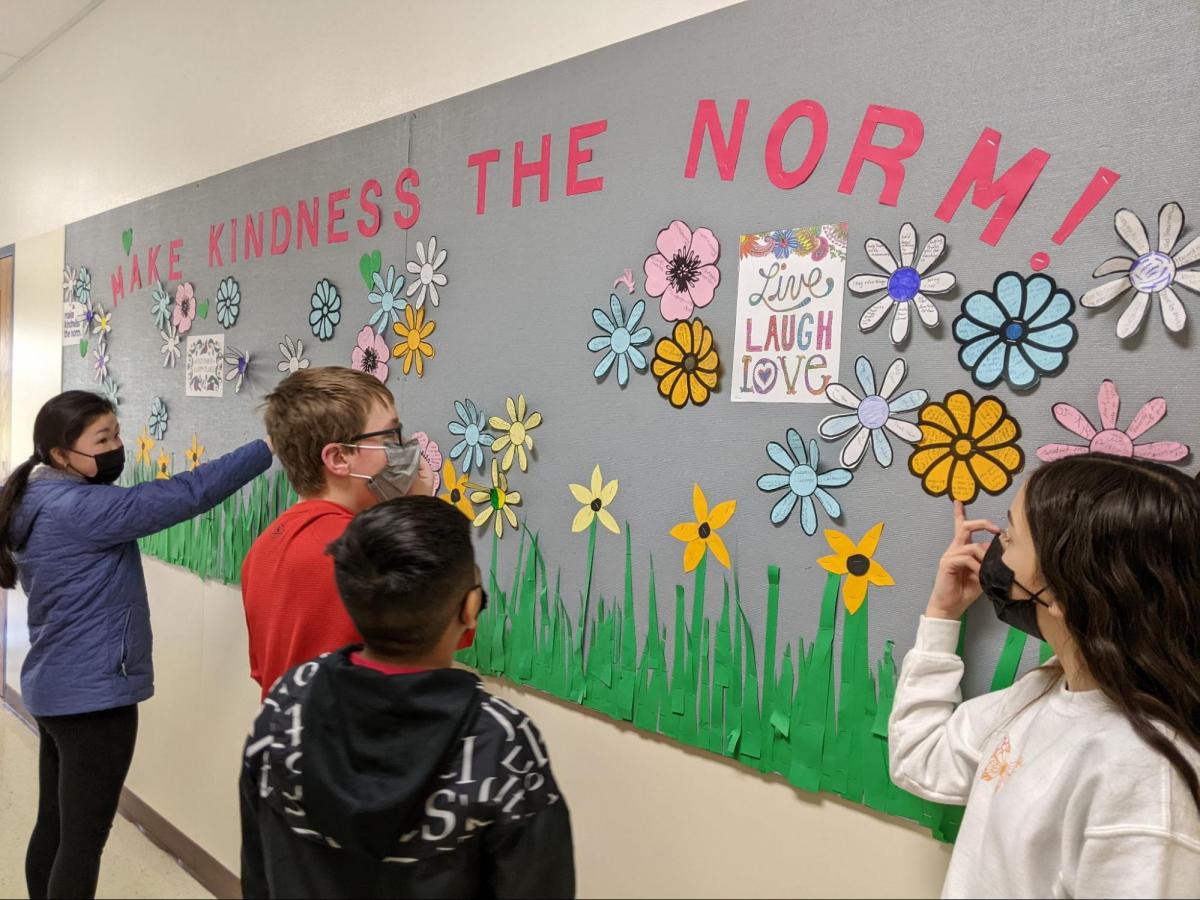District Office
20256 Grim Road NE
Aurora, Oregon 97002
Phone number: (503) 678‑7100
20256 Grim Road NE
Aurora, OR 97002
Phone: (503) 678-7100
Fax: (503) 386-4659

By Jillian Daley
Cherie Stroud, the NMSD’s Director of Teaching and Learning, brought Social and Emotional Learning (SEL) to the School District in 2017, basing it on Marc Brackett’s set of strategies for SEL called Recognizing, Understanding, Labeling, Expressing and Regulating (RULER) emotions.
These types of tools help students of all ages learn to recognize and manage emotions. SEL can support children as a student in the classroom and, later, as a contributing member of the community. SEL can also help students weather tough situations, including trauma or conflict.
Bearing in mind all the benefits students could reap, Stroud got to work and — with the help of staff and administrators, especially Assistant Director of Teaching and Learning Charyl Dyer — created a five-year plan to implement SEL throughout the School District.
Stroud acknowledges that many local educators in the School District already had incorporated SEL into lessons, but the plan itself includes techniques designed for targeted, individualized improvement. Each school has its own set of SEL tools that teachers and principals put into action.
“The beauty of it is it’s led by every teacher and administrator in the district,” Stroud says.
As the five-year plan is in its fifth year this year, Stroud and Dyer are already mapping out an extended plan with goals and objectives for the next three years.
“If either of us left, it would keep going,” Stroud says.
Brackett’s RULER strategies underpin all SEL activities. Yet school leaders have tailored SEL to fit each school, proffering a range of services and resources. In addition, staff have dived into training sessions surrounding trauma and collaborative problem solving. Another aspect of SEL found throughout the School District has been the multi-tiered systems of support (MTSS). The idea behind MTSS is to offer all students the help they need to avoid struggling with academic or behavioral issues at schoolwide, group, and individual levels.
This year, key changes include SEL training for all new staff. In addition, school leaders have introduced their staff to Sources of Strength, a program supporting suicide prevention that is being implemented among grades 3 to 12.
“We’re constantly adjusting the plan, so it’s fluid, but structured,” Dyer says.
Staff also take extra steps because students are entering school with a different perspective. Dyer says that students have felt the impact of COVID-19, losing opportunities to gain experience in their world. But students’ needs aren't necessarily greater.
“There are different needs,” she explains. “For the ‘littles,’ one of the needs is core strengths, just being able to sit on the carpet. … To be in a big school environment is a change. The kids who would have had a preschool experience haven’t had it.”
SEL has been successful at North Marion because it is designed to help students with strategies that really work, even in difficult times.
“I think I have never seen anything grow so fast in our district,” Stroud says.
However, managing emotions arising during rough times can be more challenging for students, and that's where trauma-informed education comes into play.
Why does this stuff matter at school? Well, if your house just burned down or a loved one got sick or died, you might not be able to focus on algebra, for example. Teachers can help. They learn to recognize the signs of trauma, and may offer the student additional resources or support with the help of the school counselor and the School District’s psychologist.
“Trauma-informed practices have never been more important than in our world today,” School Psychologist Jody Farri says. “Trauma can be defined as ‘a wound; either physical or emotional. A person’s response to the wound is a result of profound and/or prolonged distress to an overwhelming terrifying or unstable experience.’ As the District's School Psychologist, I have always taken into account any past, or current trauma a student may have, or is experiencing when conducting an evaluation.”
Farri says that there is so much that teachers can do in the classroom to support students with trauma.
“I think the most important and effective way to support a student with trauma is through connection and care,” she explains.
How does that work in practice? Farri says that along with building a relationship with each student, teachers can focus on consistency and routine, offer choices, establish a safe place like a calming corner, develop a sensitivity to things that may result in heightened anxiety for a student, and find ways to ease transitions (going from recess to a lesson or from Middle School to High School).
But how is your school practicing SEL? Find out:
To share a story about the North Marion School District, email Communications Specialist Jillian Daley at jillian.daley@nmarion.k12.or.us.